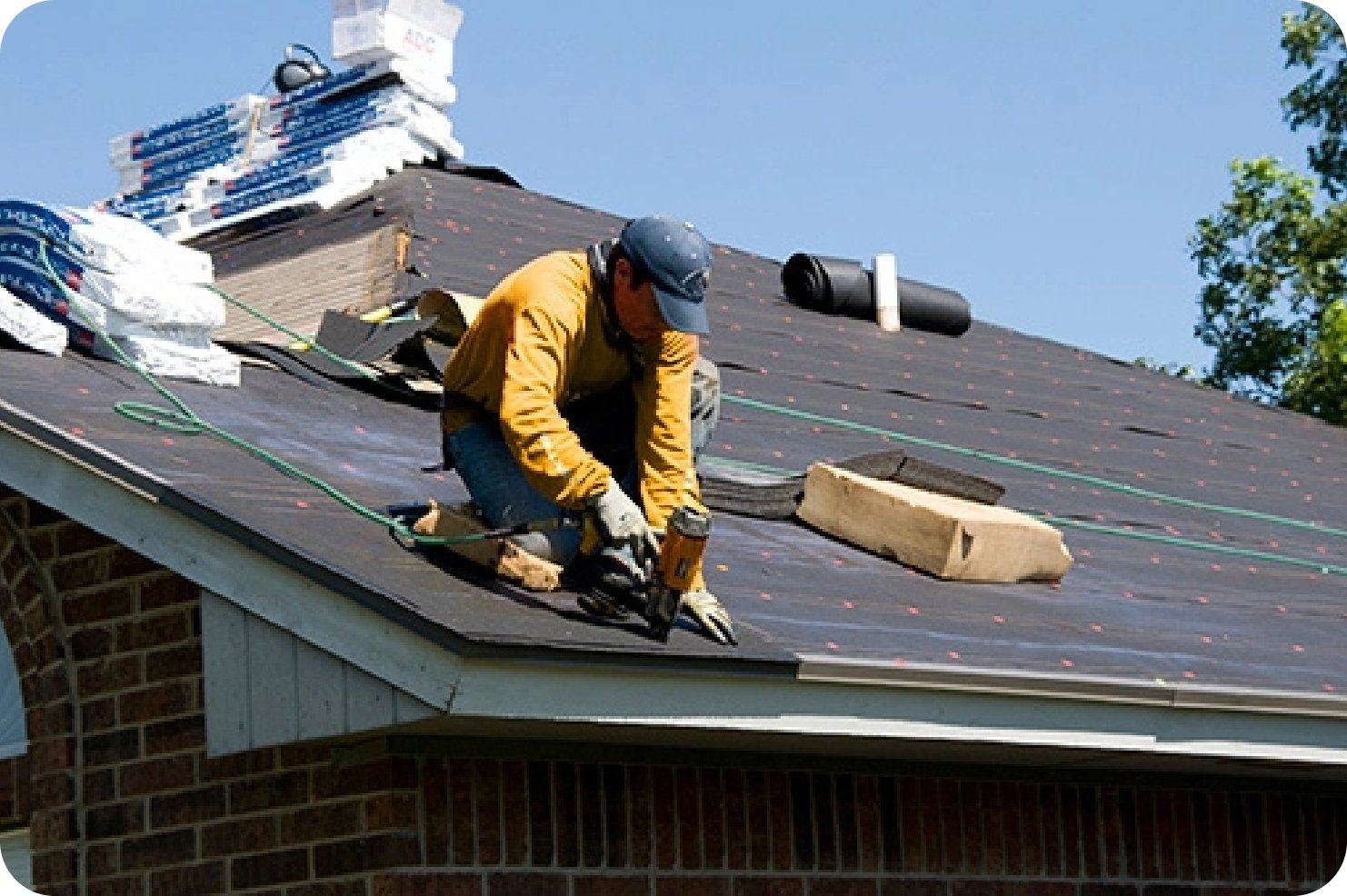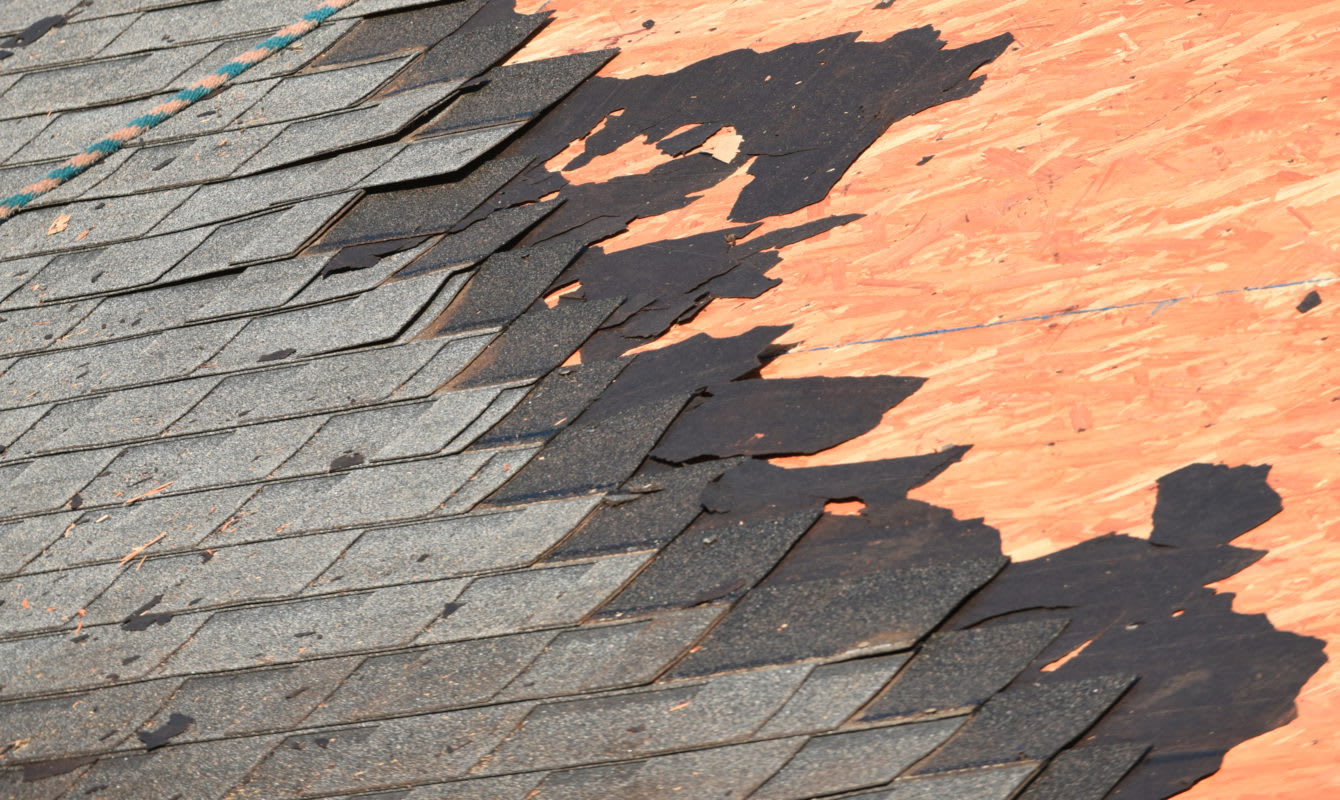Recognizing the Different Types of Roofings: A Comprehensive Overview for Homeowners
In the world of homeownership, selecting the suitable roof design is a decision that brings substantial effects for both functionality and visual allure. With an array of alternatives-- varying from the conventional gable to the contemporary level-- each kind presents special benefits and obstacles that need to align with the homeowner's specific requirements and ecological factors to consider. Comprehending these distinctions not just aids in making an informed option yet likewise influences long-term maintenance and energy performance. As we explore the intricacies of numerous roof types, it comes to be evident that one size does not fit all; the best choice might surprise you.
Gable Roof Coverings
Gable roofing systems, identified by their triangular shape, are among one of the most popular roof designs as a result of their simpleness and performance in shedding water and snow. This design includes two sloping sides that satisfy at a ridge, permitting efficient water drainage and reducing the risk of water accumulation. The steep pitch commonly related to saddleback roofs enhances their ability to deal with heavy precipitation, making them ideal for numerous environments.
Along with their practical benefits, gable roof coverings provide visual convenience. They can be adjusted to different building designs, from conventional to contemporary homes. The design can additionally fit additional attributes such as dormer windows, which improve all-natural light and ventilation in the attic room room.
In addition, saddleback roofs offer ample space for insulation, adding to power performance. Homeowners can pick from a variety of roof materials, consisting of asphalt tiles, metal, and tiles, further boosting customization alternatives.
In spite of their benefits, saddleback roofs may need added support in areas susceptible to high winds or hefty snowfall. In general, the gable roofing system stays a favored choice due to its mix of performance, sturdiness, and aesthetic allure.
Flat Roofs
Flat roofs are often recognized for their minimal layout and practical applications, particularly in industrial and industrial settings (oahu roofing). These roofing systems include a straight or nearly horizontal surface area, which permits for simple building and construction and versatile room application. While they might lack the aesthetic appeal of angled roofs, level roof coverings offer countless benefits, particularly in city atmospheres where making the most of room is crucial
One of the key advantages of flat roof coverings is their availability. House owners can utilize the roofing system area for different purposes, such as rooftop gardens, balconies, or photovoltaic panel installments. In addition, flat roof coverings are typically much more affordable to set up and maintain contrasted to their sloped counterparts, as they require fewer products and labor.
Typical materials used for level roofs consist of built-up roof covering (BUR), customized asphalt, and single-ply membranes, each offering distinct benefits. Overall, level roofs offer as a adaptable and practical choice for lots of property owners and services alike.
Hip Roof Coverings
Hip roofs are defined by their sloped sides that merge on top, developing a ridge. This design is unique from gable roofing systems, as all 4 sides of a hip roof slope downwards towards the wall surfaces, providing an extra stable framework. The angle of the inclines can differ, enabling adaptability in building visual appeals and functionality.
One of the primary advantages of hip roofs is their capacity to endure hefty winds and unfavorable weather. The sloped surfaces enable far better water drainage, minimizing the risk of leaks and water damages. Furthermore, hip roofing systems provide enhanced attic room, which can be utilized for storage or perhaps converted right into comfortable locations.
Nonetheless, building a hip roof covering can be more expensive and complicated than easier additional resources roof covering types, such as gable roofs. The added material and labor associated with developing the inclines and ensuring correct structural honesty can bring about higher expenses. In spite of these drawbacks, several house owners favor hip roof coverings for their sturdiness, aesthetic appeal, and potential for energy efficiency.
Mansard Roofing Systems
Mansard roof coverings, commonly recognized by their distinct four-sided style, function 2 slopes on each side, with the reduced slope being steeper than the top. This architectural style, originating from France in the 17th century, is not just cosmetically attractive however practical, as it optimizes the useful room in the upper floorings of a structure. The steep reduced slope allows for more headroom, making it an ideal choice for loft spaces or attics, which can be exchanged living rooms.
Mansard roofings are identified by their versatility, accommodating numerous architectural designs, from typical to modern. They can be created with different materials, including asphalt tiles, slate, or metal, giving property owners with a series of options to suit their choices and budget plans. In addition, the design enables the assimilation of dormer windows, boosting all-natural light and air flow in the upper degrees.
However, it is essential to take into consideration the prospective disadvantages. Mansard roofing systems may need even more maintenance as a result of the complexity of their style, and their steep inclines can be testing for snow and rain drainage. Generally, mansard roofing systems incorporate sophistication with functionality, making them a prominent choice among home owners looking for distinctive architectural features.
Lost Roofing Systems
As property owners progressively look for simplicity and performance in their architectural designs, shed roofings have become a popular choice. Identified by a solitary sloping airplane, a shed roofing presents a minimalist aesthetic that complements different home designs, from modern to rustic.
Among the primary advantages of a shed roofing is its simple construction, which often converts to decrease labor and product expenses. This design permits reliable water drainage, decreasing the danger of leakages and water damages. Additionally, the vertical slope supplies ample area for skylights, improving all-natural light within the interior.
Dropped roofing systems likewise supply flexibility in terms of usage. They can be efficiently integrated into additions, garages, or outdoor structures like sheds and structures. Furthermore, this roofing you can try this out system style can accommodate various roof covering products, including steel, asphalt tiles, and even green roofings, aligning with green campaigns.
However, it is necessary to consider regional climate conditions, as hefty snow loads may demand adjustments to the roofing system's angle or structure. Generally, shed roofs offer a functional and aesthetically pleasing choice for home owners wanting to optimize performance without endangering style.
Final Thought


Gable roofings, defined by their triangular form, are amongst the most preferred roofing designs due to their simpleness and performance in dropping water and snow. oahu roofing. The high pitch frequently associated with gable roofs boosts their capability to handle hefty rainfall, making them suitable for various climates
While they may lack the aesthetic appeal of pitched roof coverings, level roof coverings offer various benefits, specifically in urban atmospheres where maximizing room is critical.
